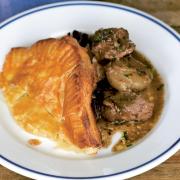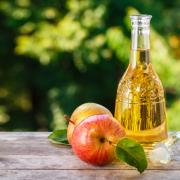As we bid farewell to impromptu picnics and jugs of Pimm’s, we can start to get excited about autumnal favourites such as pumpkin spiced lattes and comfort food.
But what seasonal ingredients should we start adding to our shopping lists, now that the leaves have started turning?
And more importantly – how should we be cooking with them this season?

Apples and pears
A pear and apple crumble will help you stay cosy and well-fed when the temperatures start to drop.
“These fruits reach their peak during autumn due to the temperate climate, which allows them to develop their natural sweetness and crisp texture,” says registered nutritionist Lara Buckle, also known as the Wellness Detective.
Buckle recommends adding them to everyday classics to add a hint of sweetness.
“Enjoy them fresh, or try them in a warm, spiced fruit compote,” advises Buckle. “They’re also perfect for adding natural sweetness to salads, or as a topping for porridge or yoghurt.
“For a more unique dish, consider making a savoury apple and pear chutney to pair with cheeses and meats.”

Root vegetables
Carrots, parsnips and beetroots also thrive in cooler conditions.
“The cooler weather concentrates the natural sugars in these vegetables, enhancing their sweetness and flavour,” explains Buckle. “Roasting root vegetables brings out their natural sweetness.
“Try them in a mixed root vegetable gratin or a vibrant beetroot hummus. For an interesting twist, make parsnip crisps or carrot-based desserts like carrot cake or carrot halwa.” Halwa is definitely worth a try if you haven’t made it before – it’s a traditional Indian dessert where grated carrot is typically cooked down in milk, spices, sugar and ghee.
In order to accomplish the perfect hearty comfort dish, layer flavours and colours to create a feast for the eyes.
“Use seasonal herbs like sage, rosemary, and thyme to complement the earthiness of autumn vegetables,” suggests Buckle. “For example, roasted parsnips with a drizzle of sage butter can be a simple yet elegant dish.”

Pumpkins and squashes
And of course, we can’t forget about the most prominent autumnal vegetable of them all… pumpkins! And their small but mighty counterparts – squashes.
And leaves falling from the trees signifies one thing – time for pumpkin pasta.
“These hearty vegetables store well and their flavour deepens as they mature during the cooler months,” says Buckle. “Beyond the classic soups, you can use pumpkins and squash in risottos, curries, or even as a base for a creamy sauce for pasta.”
Or if you are feeling really adventurous, add an autumnal twist to your breakfast or dessert of choice.
“For something unique, consider making a pumpkin-spice granola, squash pancakes or a pumpkin spice loaf,” adds Buckle.

Mushrooms
Embrace the versatility of mushrooms while cooking this autumn.
“Autumn’s damp and cool conditions are perfect for wild mushrooms like chanterelles and porcini,” says Buckle. “Sauté them with garlic and herbs for a simple side, or use them as a filling for savoury crêpes or tarts.”
If you are looking to impress vegetarian guests at your next dinner party, incorporate some porcinis into your stuffing.
“A mushroom and chestnut stuffing is a great seasonal twist for your autumn roast dinners.”

Brassicas
Brussels sprouts shouldn’t be reserved solely for the Christmas dinner table.
This contentious vegetable, along with kale and cabbage, taste great this time of year.
“These hardy vegetables actually benefit from cooler temperatures, which can enhance their flavour,” explains Buckle.
And they don’t have to be a boring side dish, they can be centre of the show.
“Roast Brussels sprouts with a balsamic glaze, or make a hearty kale and bean stew,” suggest Buckle. “You can also try cabbage in a tangy slaw or stuffed cabbage rolls with a savoury filling.”


























